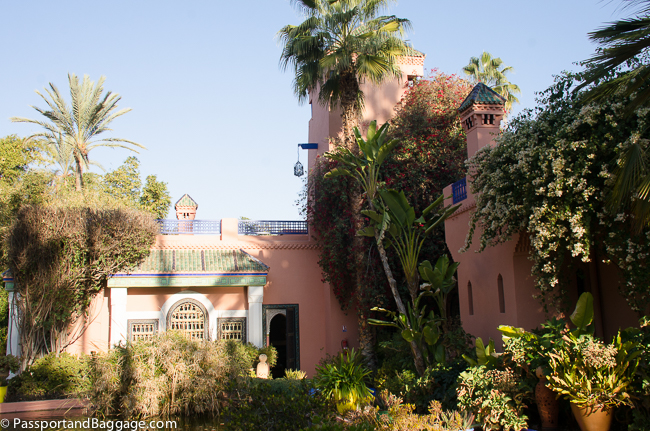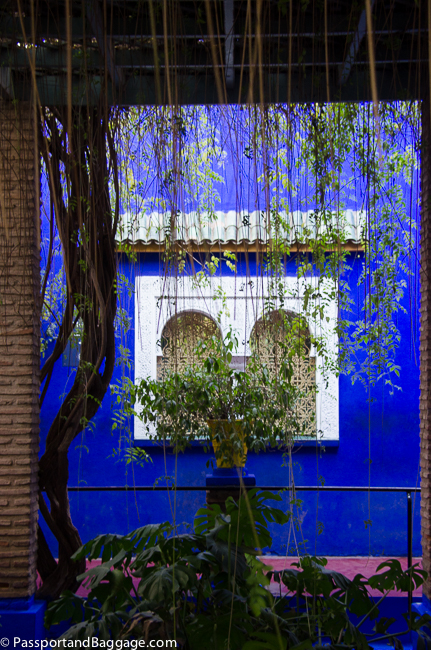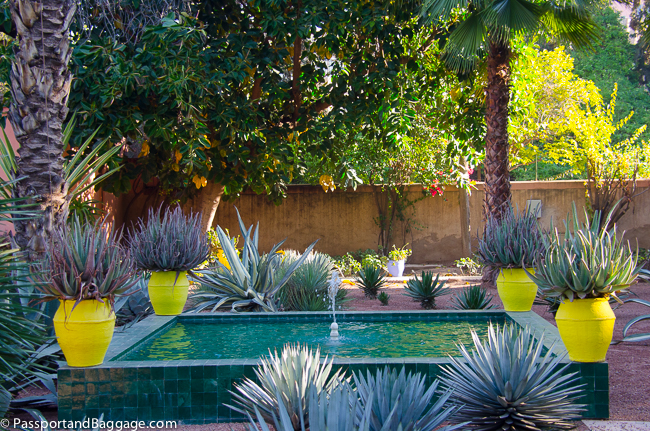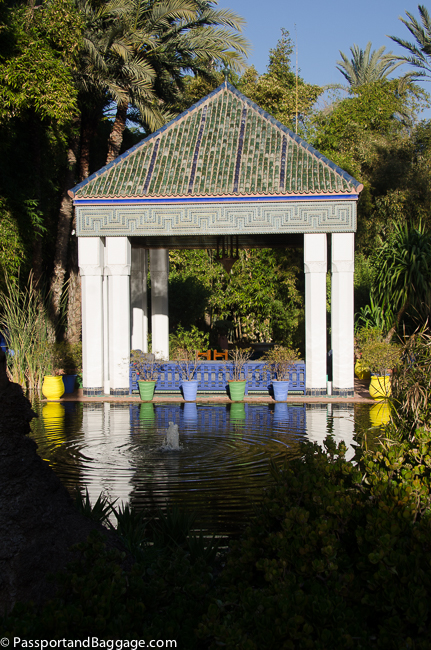December 31, 2019
The Majorelle Garden was designed by the French artist, Jacques Majorelle (1886-1962). In 1917 Majorelle was sent to Morocco to convalesce from a serious medical condition, and after spending a short time in Casablanca, he traveled to Marrakech fell in love with the vibrant colors and street life and stayed.
In 1923, Majorelle purchased a four-acre plot and built a house in the Moroccan style. In 1931, he commissioned the architect, Paul Sinoir, to design a Cubist villa for the property, (which now houses the Berber Museum). Gradually, he purchased additional land, eventually extending the grounds to 10 acres. Majorelle began planting a luxuriant garden which would become known as the Jardins Majorelle (Majorelle Garden), which became his life’s work for almost forty years.
The garden proved too costly to run and in 1947, Majorelle opened the garden to the public with an admission fee designed to defray the cost of maintenance. At times, he sold off parcels of land to fund the growing garden. Following his divorce in the 1950s, Majorelle was forced to sell the house and land. After this, the garden fell into disrepair. The garden and villa were rediscovered in the 1980s. Fashion designers, Yves Saint-Laurent and Pierre Bergé set about restoring it and keeping it from being bulldozed by a hotel developer.
The special shade of bold cobalt blue was inspired by the colored tiles Majorelle had seen around Marrakech. This color, having been used so extensively in the garden and its buildings, was named after him, bleu Majorelle—Majorelle Blue.
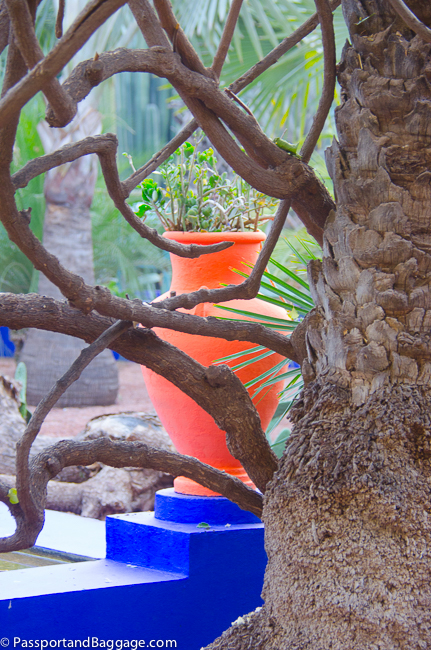
Brightly colored pots are everywhere and make for wonderful splashes of color in what is mainly a cactus garden
I had the good sense to arrive as close to opening as possible, the garden, during the Christmas/New Year Holiday is known to have a line over 2 hours long. In fact, when I left, this was the case. I was fortunate to walk right in and enjoy the garden before it filled with people.
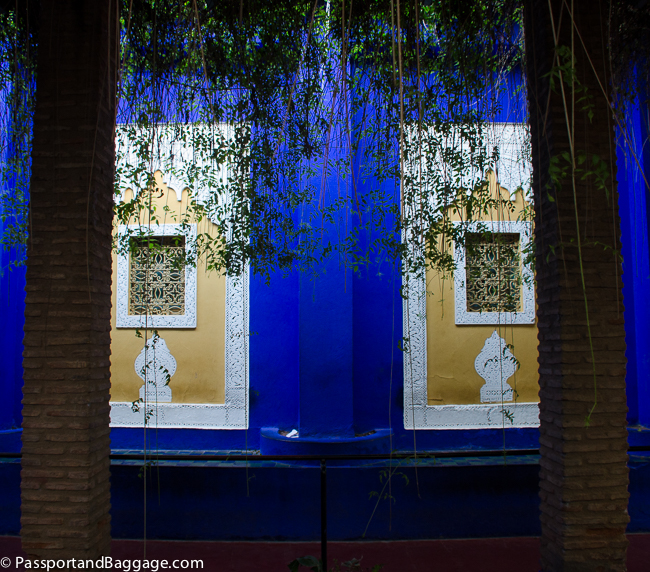
The painter’s studio has been transformed into The Berber Museum housing the exquisite personal Berber collection of Yves Saint Laurent and Pierre Bergé.
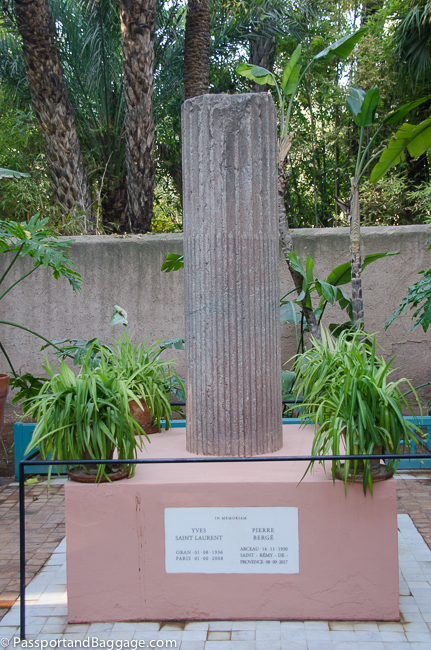
He passed away on June 1, 2008, in Paris. His ashes were scattered in the rose garden of the Villa Oasis; a memorial was built in the garden, designed around a Roman pillar which was brought from Tangier and set on a pedestal with a plate bearing his name so that visitors can remember him and his unique contribution to fashion. “It is a way for artists to live on… ”
After Yves died, I donated the Jardin Majorelle and the Villa Oasis to the foundation in Paris which bears both our names.”
Pierre Bergé, Yves Saint Laurent, Une passion Marocaine
The garden is such a delightful place to stroll, and it really needs no explanation. Enjoy the photos.
The Yves Saint Lauren Museum, just down the street opened in 2017. It houses an important selection from the Fondation Pierre Bergé – Yves Saint Laurent’s collection, which comprises 5,000 items of clothing, 15,000 haute couture accessories as well as tens of thousands of sketches and assorted objects.
 The building was designed by the French architecture firm Studio KO, founded by architects Olivier Marty and Karl Fournier.
The building was designed by the French architecture firm Studio KO, founded by architects Olivier Marty and Karl Fournier.
The outside of the building is composed of cubic forms adorned with bricks which create a pattern resembling threads of fabric.
A word to the wise, one ticket can be purchased for the Garden, The Berber Museum, and the YSL Museum. This will save a considerable amount of time if there are crowds, as you only have to stand in the entry line, not both the ticket buying line and entry line.
